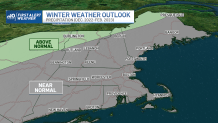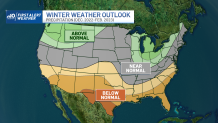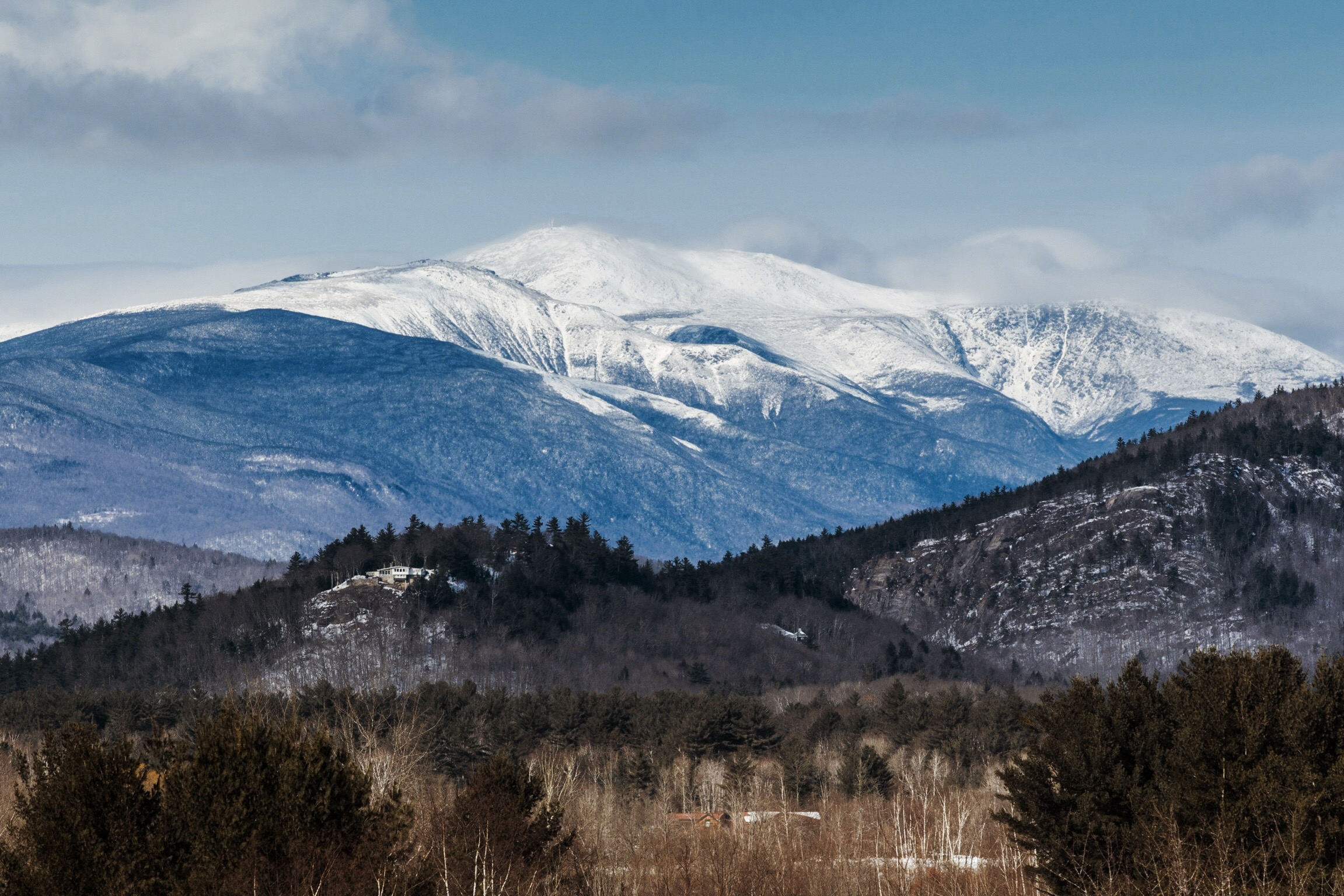NOAA’s Climate Prediction Center has released its winter weather outlook, and New England will be in the crosshairs of a warmer than average winter.
The outlook examines the probability of precipitation and temperatures deviating -- above or below -- from a normal winter.
WATCH ANYTIME FOR FREE
Stream NBC10 Boston news for free, 24/7, wherever you are. |
NOAA’s outlook doesn’t look at specific cities, but instead climate groups and regions for northern New England, northeastern New England and southern New England.
The outlook says the Crown of Maine and areas north of the Presidentials will feature above normal chances for precipitation, while southern New England remains near normal for rain. While slower than most like, the tendency would ultimately influence bring an end to the drought.
Get updates on what's happening in Boston to your inbox. Sign up for our News Headlines newsletter.

Here's a look at what's projected for the entire country.

Temperature-wise, NOAA predicts warmer than normal conditions for southern New England.

Here's a look at their predictions for the entire U.S.

What could influence and skew this outlook?
Triple Dip La Niña Pattern
For the third consecutive winter, La Niña is expected to be the main driver or influence of winter conditions. A Triple Dip La Niña is three consecutive years of a La Niña pattern. That’s the first time this century such a pattern has occurred.
La Niña is a period of cooling at the equatorial Pacific, influencing the global weather pattern.
Although each La Niña is different, generally, La Niña winters tend to feature a jet stream that’s more wavy or meridional, which could increase storm track along the northern states, ultimately increasing the likelihood of cooler and stormier conditions.
Polar Vortex
The polar vortex is a jet stream of colder air flows across the circumference of the polar latitudes. When this belt weakens, lobes of extremely cold air rush down into the mid-latitudes and across the Lower 48.
This weather phenomenon is harder to predict in the long term and exists in a meso-to-synoptic scale size. These outbreaks of cold can influence weather for a period of a few hours or days to nearly a week.
More weather stories
Be prepared for your day and week ahead. Sign up for our weather newsletter.



